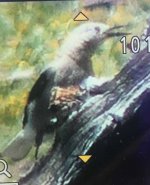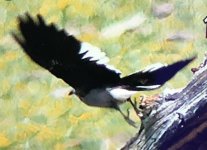Some fun facts about your bird:
The Clark's Nutcracker has a special pouch under its tongue that it uses to carry seeds long distances. The nutcracker harvests seeds from pine trees and takes them away to hide them for later use.
The Clark's Nutcracker hides thousands and thousands of seeds each year. Laboratory studies have shown that the bird has a tremendous memory and can remember where to find most of the seeds it hides.
The Clark's Nutcracker feeds its nestlings pine seeds from its many winter stores (caches). Because it feeds the young on stored seeds, the nutcracker can breed as early as January or February, despite the harsh winter weather in its mountain home.
The Clark's Nutcracker is one of very few members of the crow family where the male incubates the eggs. In jays and crows, taking care of the eggs is for the female only. But the male nutcracker actually develops a brood patch on its chest just like the female, and takes his turn keeping the eggs warm while the female goes off to get seeds out of her caches.
Not only do the lives of Clark’s Nutcrackers revolve around their pine seed diet, but the pines themselves have been shaped by their relationship with the nutcrackers. Whitebark pines, limber pines, Colorado pinyon pines, single-leaf pinyon pines, and southwestern white pines depend on nutcrackers to disperse their seeds. Over time this interaction has changed their seeds, their cones, and even the trees’ overall shape in comparison with other pine species whose seeds are dispersed by the wind.
The Clark’s Nutcracker tests a seed for soundness by moving it up and down in its bill while quickly opening and closing its bill, in a motion known as “bill clicking.” It also chooses good seeds by color: when foraging on Colorado pinyon pines, it refuses all but dark brown seeds.
Ounce for ounce, the whitebark pine seeds that many Clark’s Nutcrackers depend on have more calories than chocolate.
Clark’s Nutcracker is in the crow and jay family—but the first time Captain William Clark saw one, in August of 1805, he thought it was a woodpecker. He and Meriwether Lewis collected a specimen in Idaho on their return journey a year later. Clark’s Nutcracker was one of three new bird species brought back from their expedition, all of which were described by the naturalist Alexander Wilson.
The oldest recorded Clark’s Nutcracker was at least 17 years, 5 months old when it was recaptured and rereleased during banding operations in Oregon in 1969. It had been banded in the same state in 1952.







